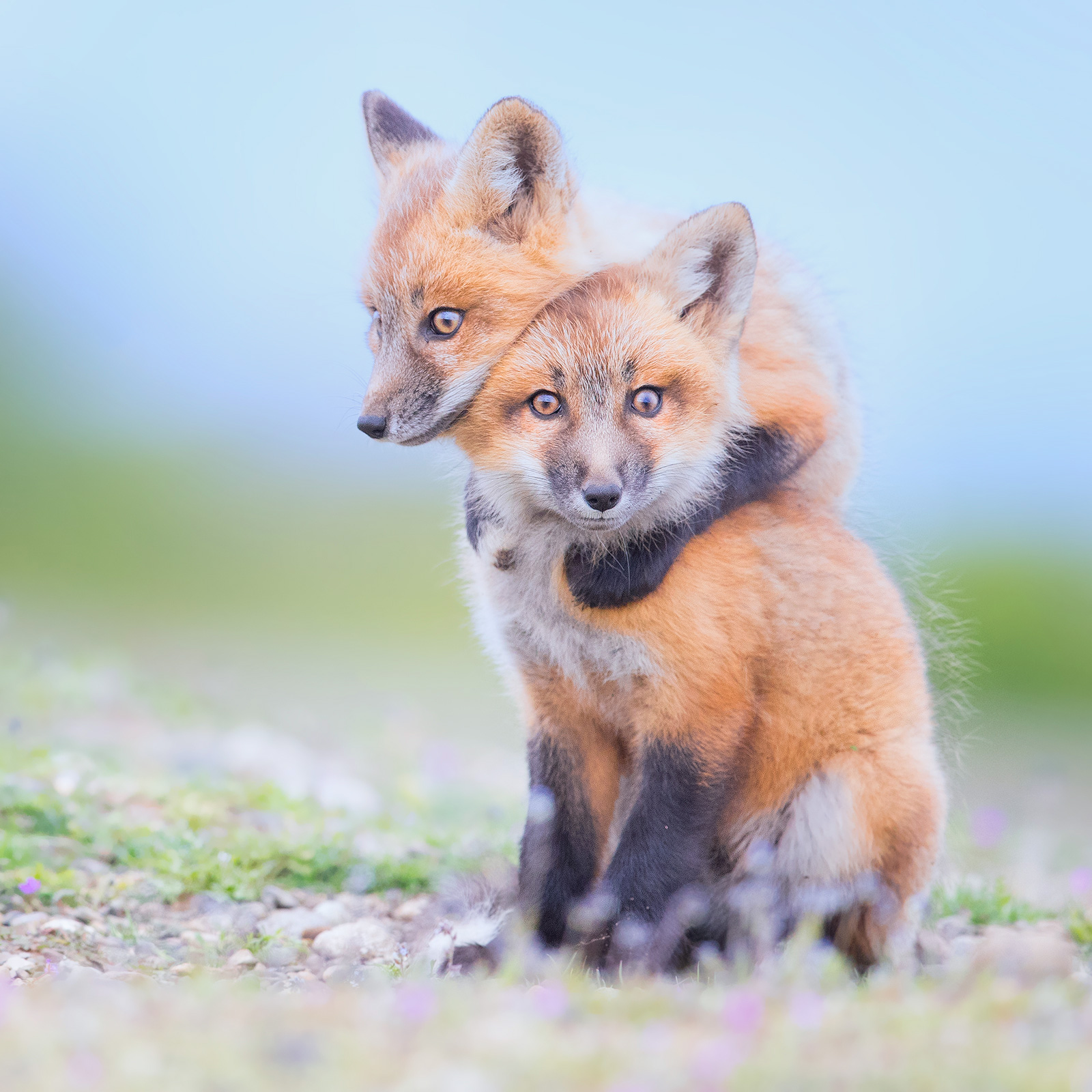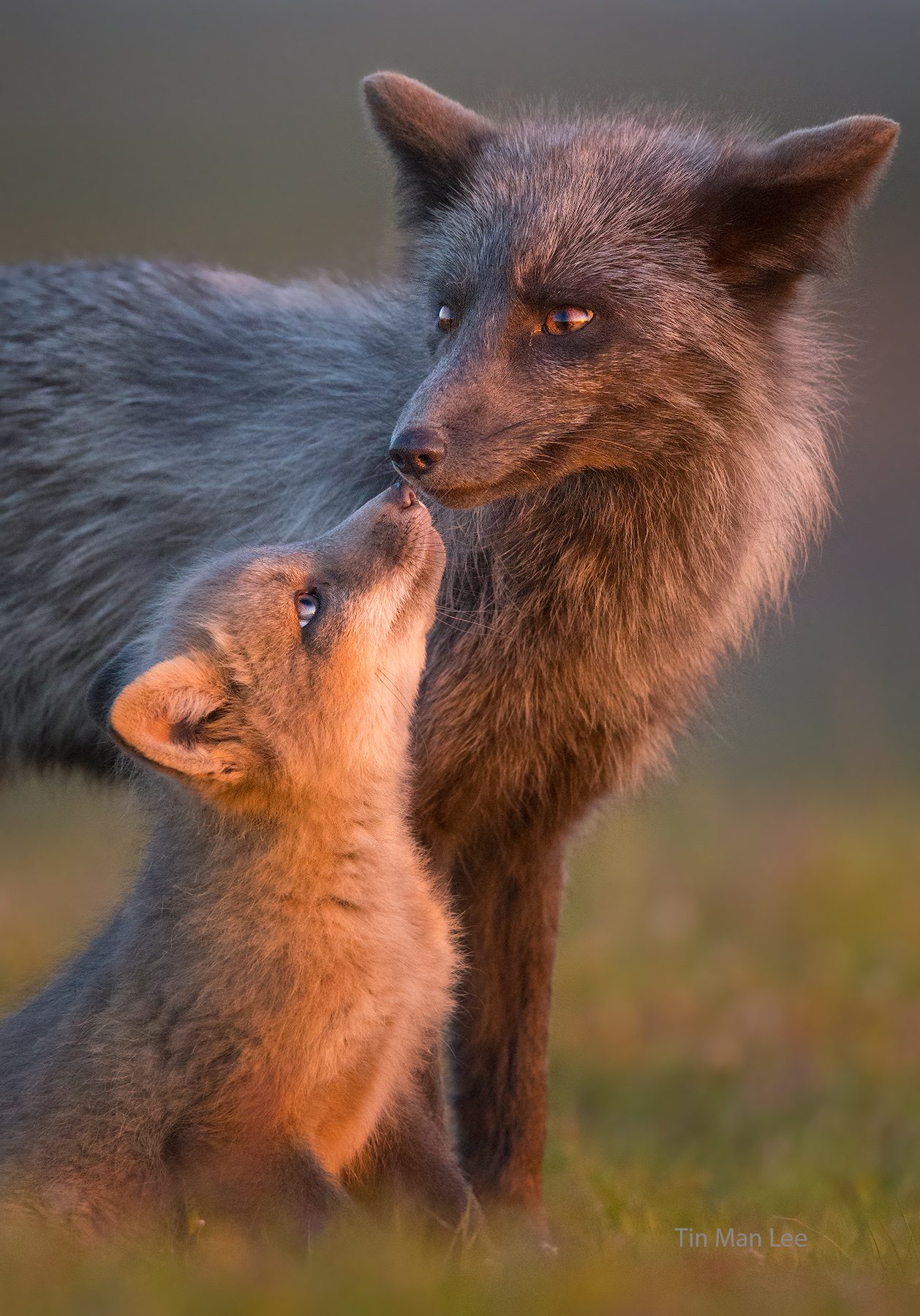12 Favorite Fox Photos
12 Favorite Fox Photos
by Tin Man Lee
Have you seen a wild fox before? Wild means they are not in the zoo, or in any kind of captivity such as game farms.
I had never seen a wild fox my whole life, until 8 years ago.
As a kid I've always wanted to see a red fox.
But life kicked in.
School, work, family, friends, one easily gets trap in the day to day grind and forget their childhood dreams.
I was like that for most of my life, chasing the next promotion, the next car, a bigger TV...
I did what most people did, because that's what the society expected of me.
I slowly realized I wasn't being true to myself.
I didn't remember what force pulled me from binge watching Netflix, to getting out of my couch, hopping on a plane, driving and hiking into the wilderness, with no experience but just a childhood dream being awaken.
But somehow I found a new world. A world I felt at ease. And healing happened gradually. I will share more of what happened.
Here are some of my fav fox photos over the years.
By the way all photos were taken without bait. (Remember, if you see a super wide angle fox photos, sometimes they were baited/lured with food by the photographers. I hate those kind of bait photography because the photographers were actively changing the behavior of the animal for the sake of a photo. I see it as cheating. Don't do that. Check out my blog post about this issue.)
Which one is your favorite? By the way, if you like this post, please click "like" and share with your friends. It would mean a lot to me.

This encounter made me think of a famous fable in China. My very good friend told me a fox den location. I almost didn't go because of my back injury. One herniated disc and a bulging disc next to each other in my lower back. I went anyways. Who knew if I ever had another chance. I planned to stay for a weekend. But I heard a "pop" in my back and couldn't take the plane ride back home. I was in the bed the whole time at the hotel for a few days to rest my back. At the last day I couldn't resist, and drag my body out one last time. Each step in the field was like a dagger into my right hip. Took me an hour to walk half a mile. At the end, I found a spot with a nice background and sat. Few hours later, this happened. The photo won the Wildlife Category of Nature's Best Photography Windland Smith Rice International in 2018, among 25,000 submissions from 50 countries and was in display in the Smithsonian Museum of Natural History in Washington DC from 2018 to 2019. Canon 1DX Mark II, 600mm f/4. Yea I know, I was still using my Canon back in the days.

It's my first encounter of a red fox in snow in good light in my life. And the first time I ever used a 600mm f/4 lens.

My first encounter with a red fox after 7 days of not finding one in Winter Yellowstone. Canon 1D Mark IV, 500mm f/4. It was taken back in 2011.

My first attempt to include more habitat and landscape with a wider lens. With back pain, I tried very hard to get such a low angle. 100-400mm lens.

The endangered San Joaquin Kit Fox pup. She just came out of the den to play, and seemed to have found a nice decoration for the entrance of the den. When she saw me, she had such an expression like a mischievous kid. It was my first shot that sold to a buyer as a 5-feet acrylic limited edition print for $2,500.

I remember the moment vividly when one of them just climbed and hugged her sibling. I was alone, watching them. It was like a slow-mo video, one second felt like eternity. A divine experience.

The little cub was so focused he just walked past me as if I didn't exist.

I paid more attention to the angle of light and the lines and geometry in the composition hoping to convey more emotion in the more recent stage of my photography.

An incoming San Joaquin Kit Fox. They are nocturnal. So it's a privilege to see them out in the day time. Being the smallest fox species in North America, they are just a little bit bigger than a squirrel.

Who wants to squeeze his face? This little fox got out from the den and ran towards my direction for a few feet, suddenly stopped, and had a big yawn.

San Joaquin Kit fox mom and pup. The pup was looking at the big ears of the mother fox. Look at their eyes. All black without white usually means they are nocturnal species.

Another divine moment in my life. I've tried many evenings but these foxes seemed to be sleeping in the den long before sunset, so my attempt for backlighting never materialized. Until that evening. It was all quiet again, with no fox sighting. Everyone left. But I would always prefer to wait for wildlife than to catch a dinner. These two little guys came out for a few seconds, and went back inside the den to sleep.
I wouldn't have seen all these foxes if I didn't make up my mind to go into the wilderness. And these encounters had been the happiest moments of my life. Seeing wildlife in their natural habitat is the best way to heal. I want to share with you two quotes I like to end.
I often think that one of the most important things in our life is the rich living things surrounding us human beings. Their existence not only heals us, but most importantly, they let us learn and understand what we human beings really are. I believe that only very few people would ever see a wild wolf in their whole life. But, whether we would meet a wild wolf or not, it’s not important. It’s the fact that the wolves and us both live on and share this earth, and that we understand and be grateful of this fact— that’s the most precious thing for us. Not only wolves, but the meaning of all lives in our eyes should be the same.
- Michio Hoshino
Remote from universal nature and living by complicated artifice, man in civilization surveys the creature through the glass of his knowledge and sees thereby a feather magnified and the whole image in distortion. We patronize them for their incompleteness, for their tragic fate for having taken form so far below ourselves. And therein do we err. For the animal shall not be measured by man. In a world older and more complete than ours, they move finished and complete, gifted with the extension of the senses we have lost or never attained, living by voices we shall never hear. They are not brethren, they are not underlings: they are other nations, caught with ourselves in the net of life and time, fellow prisoners of the splendor and travail of the earth.
-Henry Beston

ABOUT THE AUTHOR
Tin Man Lee is a wildlife photographer who has won the Grand Prize (2013) and Winner of Wildlife Category (2018) in the prestigious Nature's Best Photography Windland Smith Rice International, among 25,000 entries from 50 countries. His photos have been displayed at the Smithsonian Museum of Natural History in Washington DC, G2 Gallery in Los Angeles, and an invited solo exhibit of 48 photos at HKUST, Hong Kong. His passion is to take wildlife photos that evoke emotion to celebrate the beauty of nature. He teaches a wildlife photography boot camp and the DTS editing class.
All of the above photos were edited from RAW to JPEG by a workflow I developed over the years which allowed me to win grand prize and winner category of Nature's Best Photography Windland Smith Rice International and other awards. The workflow is brand new and different from traditional editing where it used a human visual psychology approach. Over 400 copies have been sold and many students had won international awards and publications after mastering this technique, which I called Dynamic Tension Stacking. Click below and check it out.
Being able to find animals is as important as mastering your photography skills. Check out my Photographer's Guide to Alaska, Mount Evans and Falkland Islands.
Join the 8,000+ readers and subscribe to my email newsletter where you will get my daily tips on wildlife photography and news and trip reports. You can unsubscribe anytime.






[…] out the stunning fox images he posted last night. They’re absolutely […]
Those little foxes look cute
Those little foxes look cute
Nice the little foxes are cute
Oh my gosh those little pictures are good